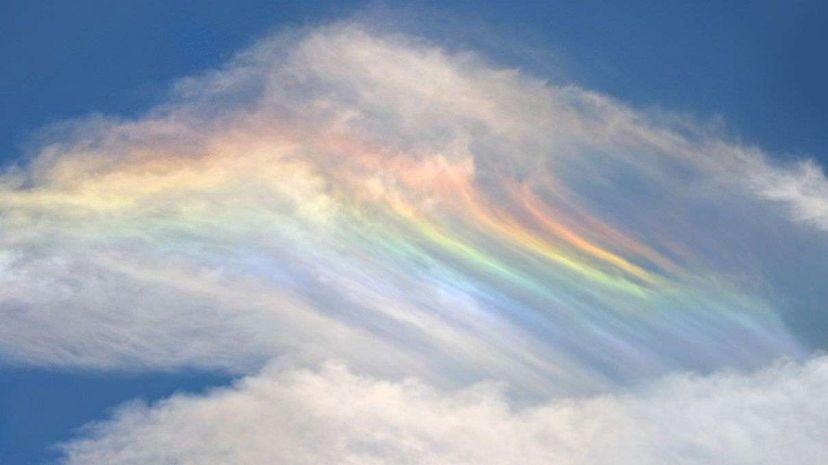
Key Takeaways
- "Fire rainbows," or circumhorizontal arcs, form when sunlight refracts through ice crystals in cirrus clouds, creating vivid, colorful phenomena in the sky, typically during summer in mid-latitudes.
- Smartphone cameras have made it easier for people to capture and share images of atmospheric phenomena like circumhorizontal arcs and "sun dogs," enhancing public interest and engagement with atmospheric optics on social media.
- Despite the widespread sharing of these phenomena, there's often confusion about what they are, with some mistaking circumhorizontal arcs for other phenomena like sun dogs, highlighting the need for educational resources around these atmospheric optics.
If you're an avid social media user, you might remember the recent flurry of Instagram pictures — thousands of them, at last count — of what posters called “fire rainbows.” The latter were wispy, iridescent red and golden clouds that appeared to form a gentle V shape in the sky, almost as if they were angels' wings. Here's one particularly vivid shot, taken of the sky over South Carolina.
And in May, a slew of smartphone photographers captured very similar pictures of the sky in Wisconsin, as local TV news station WATE reported on its website.
Advertisement
As a number of news websites jumped in to explain, though, the term “fire rainbow” is a bit of a misnomer, since what the amateur photographers captured wasn't really a rainbow, and there wasn't any fire involved. What they were seeing actually was something called a circumhorizontal arc, which is caused when sunlight refracts through ice crystals in cirrus clouds. That's a contrast to rainbows, which appear after rainfall when the sun is at a low angle.
“There are many different types of arcs that are formed by the refraction of sunlight through flat ice crystals,” meteorologist Chris Robbins, a private consultant and operator of iWeatherNet, explains in an email. “The angle of the sun relative to the arc determine the type of arc. A circumhorizontal arc will always be 46 degrees below the sun, and the sun must be very high above the horizon — a 58-degree angle from the horizon or higher. Therefore they are typically seen during the summer in mid-latitudes, and rarely seen further north where the sun angle is lower."
The “fire rainbow” photo frenzy, though, is just part of a bigger trend: People are taking advantage of the increasingly sharp optics in their smartphone cameras to snap pictures of atmospheric phenomena, and then sharing them on social media sites. It's become so popular that NOAA's Weather in Focus photo contest now includes an “In the iMoment” category devoted to images shot with smartphones and other mobile devices. This year's winner: a majestic shot of altocumulus clouds over the Great Smoky Mountains.
All this sharing of sky images on social media, however, doesn't necessarily mean that we understand what we're seeing. Robbins notes, for example, that some people who've posted pictures of what they thought were “fire rainbows” actually were observing another type of arc called a “sun dog,” which forms to the right and left of a rising or setting sun. Even so, he thinks it's a first step in learning. “I think it's great that people are sharing the atmospheric optics that they observe,” he says.
Taking Your Own Weather Pics
If you're interested in creating pretty cloud pictures, IPhone Photography School offers an article titled “How to Capture Dramatic Skies.” One particularly useful tip is to use the HDR (High Dynamic Range) mode on your smartphone camera, which enables you to capture the details and highlights in clouds and the ground as well, without accidentally over-exposing either of them.
Another useful resource is Clouds-online.com, an Internet atlas that details the myriad subtle variations in cloud structure, and provides photos of them as well. If you're looking for something more basic, try NOAA's online primer “Ten Basic Cloud Types.”
Advertisement